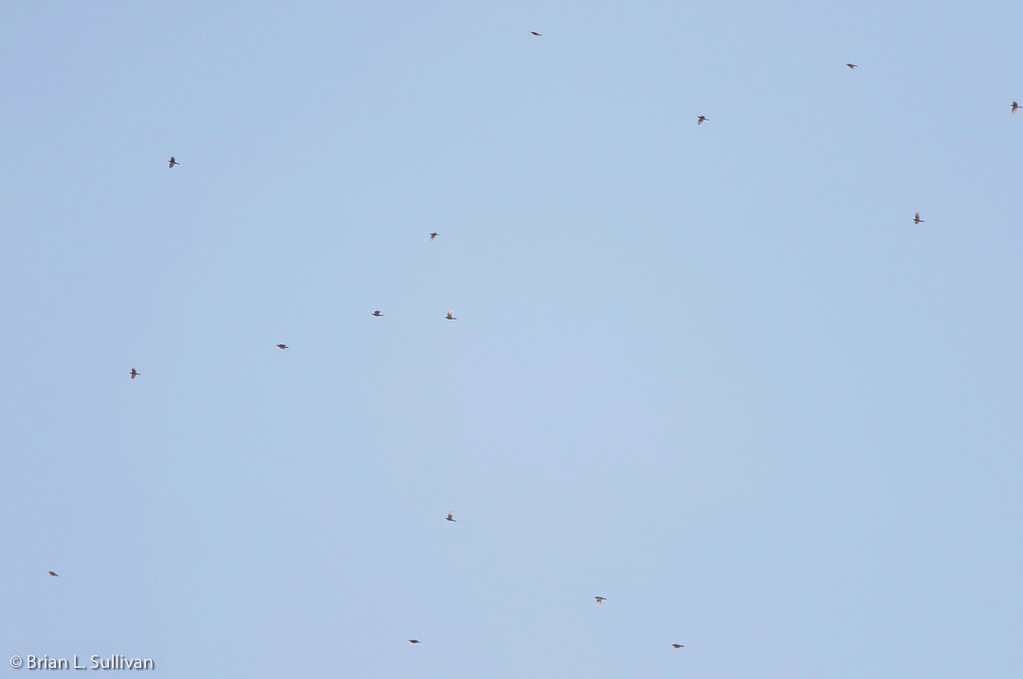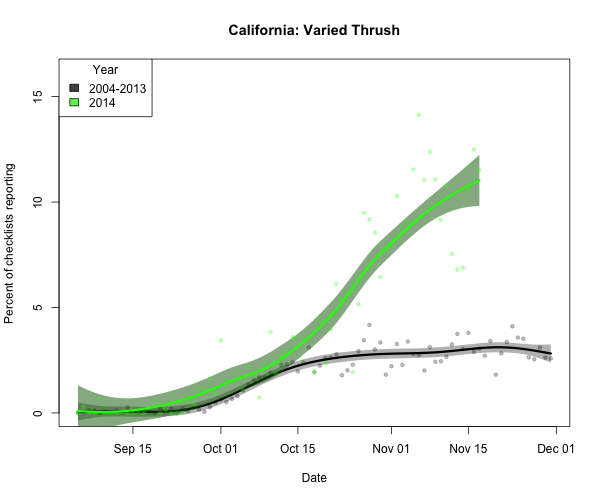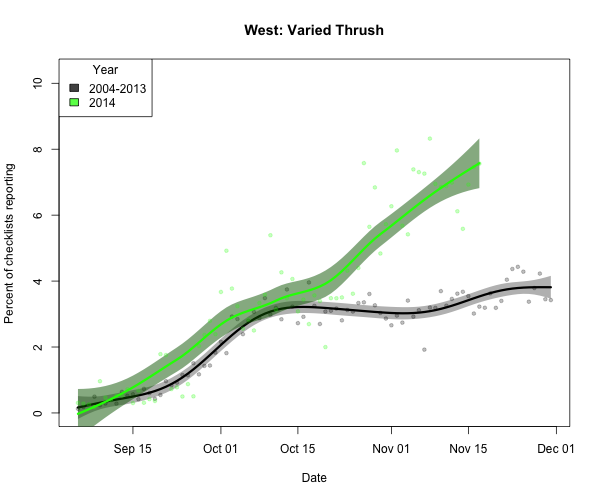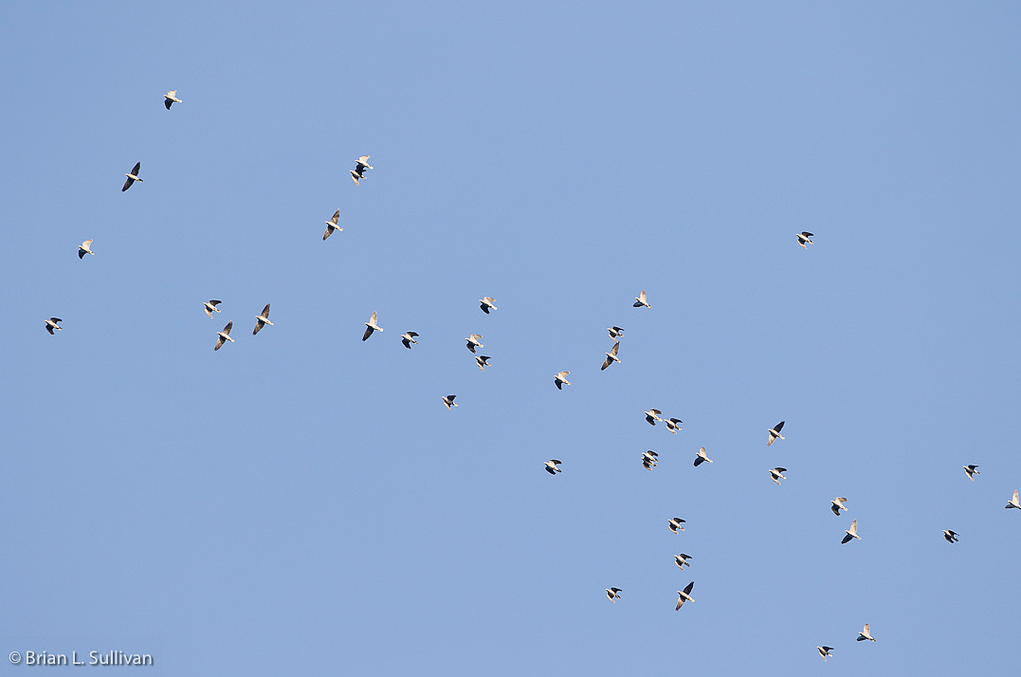This fall has seen some quite large movements of Varied Thrushes in California and across the West – birders around the region have been reporting larger (and larger than normal) flights of birds for a number of weeks. Some of these movements have been large, including this recent report of the species in morning flight at Point Pinos in Monterey County, California of high flying migrants that may have been blown over the water, another report from San Luis Obispo, and another from San Francisco.  Areas of the eastern Sierras in California are also in on the action. Not only have there been large numbers reported, but many areas are reporting the species and many observers. The images below for Varied Thrush patterns in California and across the BirdCast West region show two lines, the green lines representing the frequency of occurrence for this species as reported on complete checklists to eBird from 1 September to present in 2014 and the black lines showing this frequency averaged across 2004-2013.
Areas of the eastern Sierras in California are also in on the action. Not only have there been large numbers reported, but many areas are reporting the species and many observers. The images below for Varied Thrush patterns in California and across the BirdCast West region show two lines, the green lines representing the frequency of occurrence for this species as reported on complete checklists to eBird from 1 September to present in 2014 and the black lines showing this frequency averaged across 2004-2013.


What causes these irruptive movements of Varied Thrush, whether this fall or in previous years of such irruptions, is still a bit unclear; but the irruptions almost certainly relate to cycles of oak masting and resultant acorn production (see this reference and this reference). But these cycles may vary extensively in terms of the total available crop, perhaps as a result of persistent and extensive drought in parts of the West or as some other more regular climatic patterns vary.
Of interest will be what happens this winter season with vagrant Varied Thrushes. In years with larger than normal movements of the species as reflected in southern California (such as this year), larger than normal numbers of extralimital vagrants occur in the Desert Southwest and eastern US (this link, again, showing a relationship between southern CA CBCs and extralimital vagrancy). So get out and find a Varied Thrush and submit it to eBird! Several out of range birds have already appeared in the last months as far east as the Great Lakes region (such as this beautiful individual).
Of course, other species are on the move in large numbers and may also be related to the conditions of the acorn crop and larger scale meteorological or climatic conditions: Band-tailed Pigeon, in particular, comes to mind (the image below is part of a large movement observed at Point Pinos).





